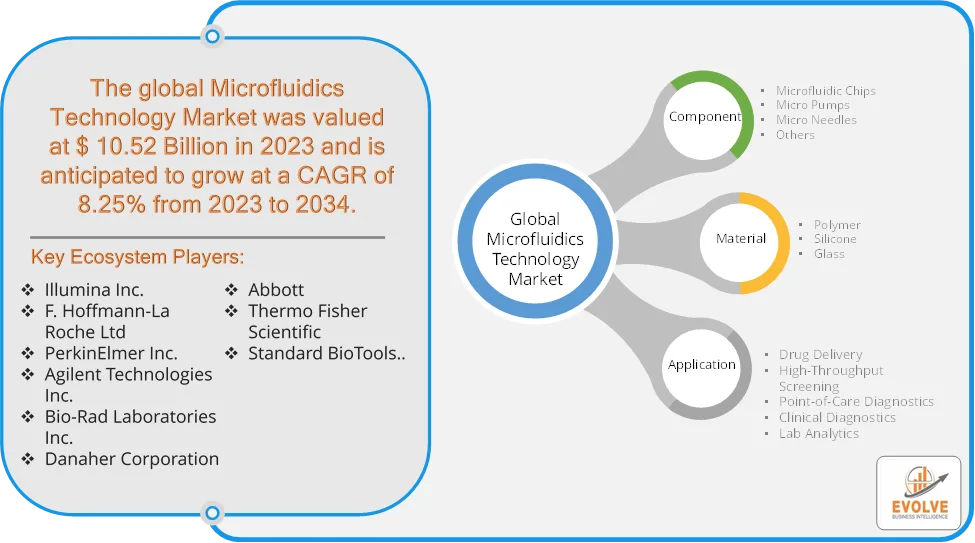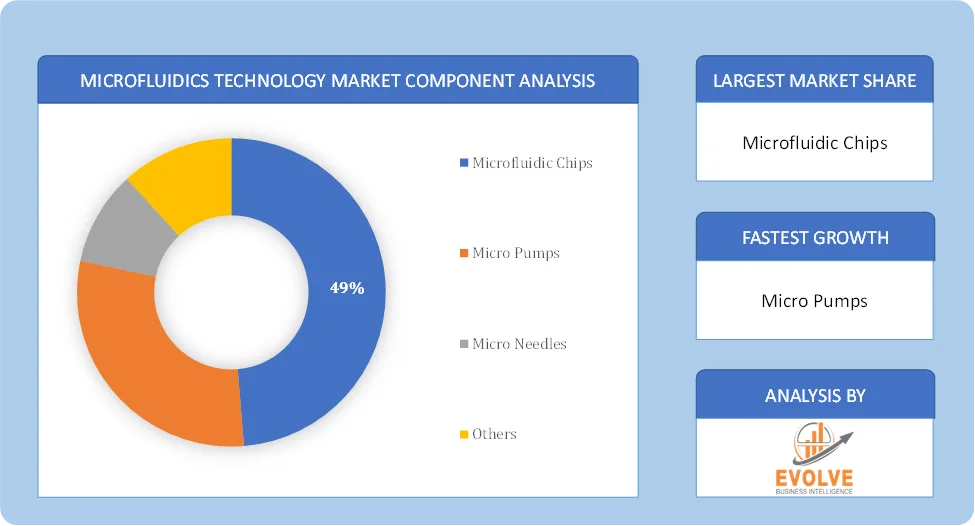Microfluidics Technology Market to Reach USD 32.58 Billion by 2034

Evolve Business Intelligence has published a research report on the Global Microfluidics Technology Market, 2024–2034. The global Microfluidics Technology Market is projected to exhibit a CAGR of around 8.25% during the forecast period of 2024 to 2034.
Evolve Business Intelligence has recognized the following companies as the key players in the global Microfluidics Technology Market: Illumina Inc., F. Hoffmann-La Roche Ltd, PerkinElmer Inc., Agilent Technologies Inc., Bio-Rad Laboratories Inc., Danaher Corporation, Abbott, Thermo Fisher Scientific and Standard BioTools.
The Global Microfluidics Technology Market is projected to be valued at USD 32.58 Billion by 2034, recording a CAGR of around 8.25% during the forecast period. The microfluidics technology market is experiencing significant growth and is projected to continue its upward trajectory in the coming years. Microfluidics involves the manipulation of minuscule amounts of fluids within channels that are typically on the micrometer scale (one millionth of a meter). This technology offers numerous advantages over traditional methods, including reduced reagent and sample consumption, faster analysis times, higher precision, and the potential for automation and integration into portable devices.
The microfluidics technology market is a dynamic and rapidly growing field driven by the increasing demand for advanced diagnostic tools, technological innovations, and the growing adoption of lab-on-a-chip and organ-on-a-chip technologies across various industries, particularly healthcare and pharmaceuticals.
Download the full report now to discover market trends, opportunities, and strategies for success.
Segmental Analysis
The global Microfluidics Technology Market has been segmented based on Component, Material and Application.
Based on Component, the Microfluidics Technology Market is segmented into Microfluidic Chips, Micro Pumps, Micro Needles, and Others. The Microfluidic Chips is anticipated to dominate the market.
Based on Material, the global Microfluidics Technology Market has been segmented into Polymer, Silicone, and Glass. The Polymer segment is anticipated to dominate the market.
Based on Application, the global Microfluidics Technology Market has been divided into Drug Delivery, High-Throughput Screening, Point-of-Care Diagnostics, Clinical Diagnostics, and Lab Analytics. The Point-of-Care Diagnostics segment is anticipated to dominate the market.
Regional Analysis
The Microfluidics Technology Market is divided into five regions: North America, Europe, Asia-Pacific, South America, and the Middle East, & Africa. North America currently holds a significant market share. Significant investments in research and development activities, particularly in the pharmaceutical and biotechnology sectors. Increasing demand for point-of-care diagnostics for chronic diseases and infectious diseases and favorable government policies supporting the adoption of advanced medical technologies. Europe is the second-largest market for microfluidics technology globally. Increasing demand for point-of-care diagnostics and lab-on-a-chip technology. Growing investments in healthcare research and development and supportive government initiatives and funding for research projects. Asia Pacific is the fastest-growing regional market for microfluidics technology. Rapidly developing healthcare infrastructure and increasing healthcare expenditure and growing prevalence of chronic and infectious diseases, leading to higher demand for diagnostic tools. Rising awareness and adoption of advanced medical technologies. In Latin America region, Countries like Brazil, Mexico, and Argentina are adopting microfluidic applications in healthcare and agriculture and emerging market with rising interest in low-cost diagnostic tools. Middle East and Africa is nascent but promising market with high unmet medical needs and growing deployment of mobile healthcare solutions. Rising investment in healthcare digitization and increased international collaborations for technology transfer.



